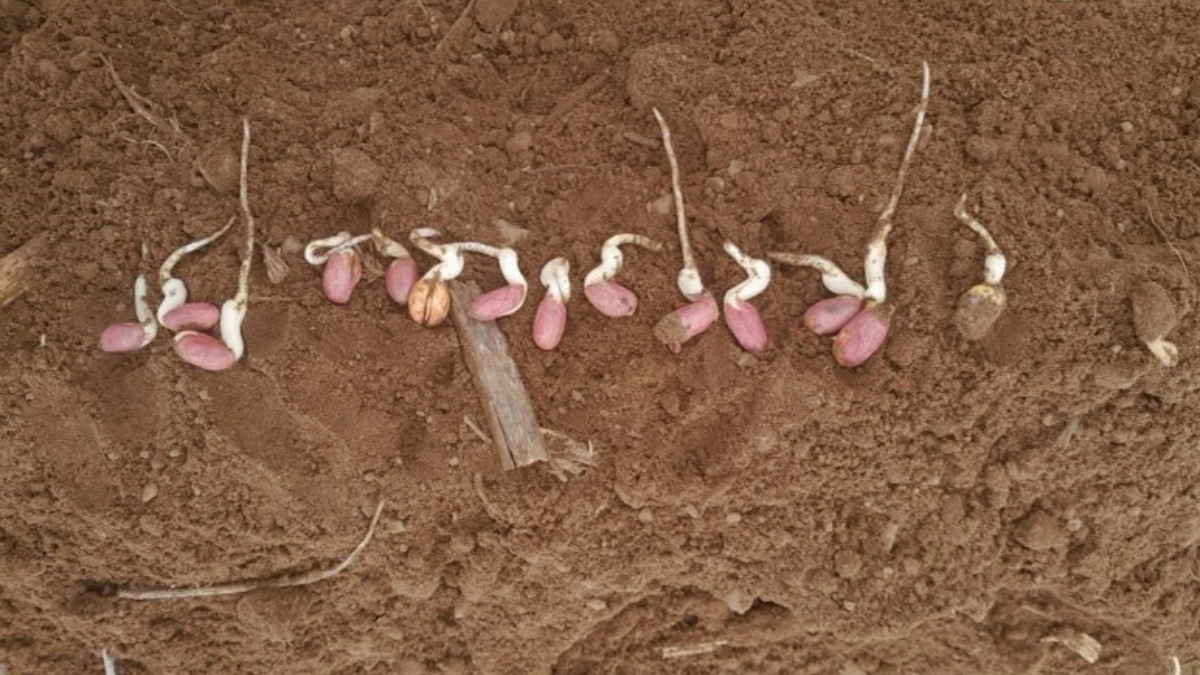1st Crop Report as of November 13: Agricultural Overview
Overview of the 1st Crop Report
In mid-October, the planting of summer crops began in Córdoba, La Pampa, and Buenos Aires, driven by the accumulated rains during the month. However, the endeavor is experiencing delays compared to this time in previous campaigns, primarily due to inadequate moisture in the first centimeters of the soil.
According to various engineering reports, some producers opted for later planting, thus managing to accumulate more moisture in the soil profile to ensure successful planting. It is anticipated that this approach would result in an increased number of hectares planted in November compared to October. The delay is not deemed critical, given that it is still early, and the situation could completely reverse.
In light of this situation and with rainfall below expectations and historical averages throughout the winter and spring seasons, Argentina has embarked on a new peanut season.
Temperatures have been below historical records for this time of the year, to the extent that isolated frosts occurred in late October in several locations in the south of Córdoba, La Pampa, and Buenos Aires, impacting the germination and emergence of peanuts. In the towns of Vedia (Buenos Aires) and Quemu Quemu (La Pampa), some producers had to replant peanut lots that did not reach the stand of adequate plants to avoid affecting future performance.
As of the date of this report, the overall progress of planting is at 61%, with the remaining 39% expected to be achieved in the next 10 days, weather conditions permitting. According to current conditions, it is anticipated that plantings will be carried out within the optimal schedule, ranging from October 25 to November 30.


The western and northern areas of Córdoba are presenting the most unfavorable records in terms of useful water reserves in the soil profile. Consequently, peanut plantings in these regions are lagging behind compared to the rest.
Our Main Peanut Production Zone Reference Map
The primary peanut cultivation zones in Argentina encompass the provinces of Córdoba, La Pampa, San Luis, and Buenos Aires.

Analysis of Precipitation and Temperatures
Cumulative rainfall during October was, in most departments, below the historical average (2007-2022) for this time of the year. Particularly, the accumulations were higher in the southeastern sector of the province, benefiting peanut plantings. Furthermore, late October rains motivated the continuation of planting, aiding the emergence of already planted crops.
As mentioned earlier, significant rains occurred in the peanut zone during the last week of October and the first week of November, improving conditions for ongoing planting tasks and the emergence of previously planted peanuts.
From November 10 to 13, the passage of a cold front brought precipitation of varying magnitudes to Córdoba. The highest accumulations occurred in the southern part of the province. These rains are highly beneficial for the summer crops, including peanuts, and contribute to soil moisture recharge. The West and North Córdoba region is the most critical in terms of soil moisture, receiving isolated and less substantial rains compared to other areas. Producers in these zones are patiently awaiting significant rains to commence planting activities, given they have a wider window of days for peanut implantation.

Regarding thermal records, November temperatures show somewhat abnormal values according to zone statistics. During the first and second weeks of November, minimum temperatures hovered around 13°C, while average maximum temperatures ranged between 27°C and 29°C. (Source: SMN). The first week of November witnessed two extreme events for this time of the year. On November 2, low temperatures caused mild frosts in the southern province but more intense ones in Buenos Aires and La Pampa. On November 7, extreme temperatures above 40°C were recorded throughout the province of Córdoba.


Water Distribution in Córdoba
The graph illustrates the available water content in the peanut cultivation area for November. The average values of Available Water (AW) are within moderate levels, showing an improvement compared to the same date in October. The significant variation in soil water content between the two months is noticeable.
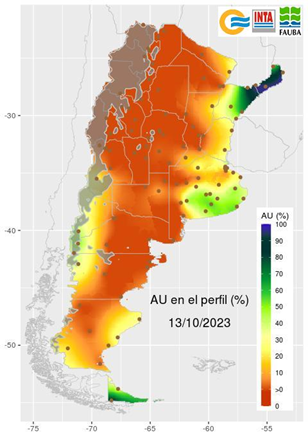
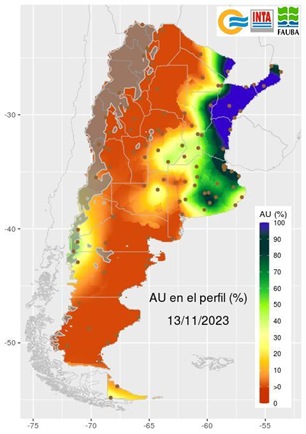
A comparison between water content on October 13, 2023, and November 13, 2023, demonstrates changes in available water resources.
Projected Field Tasks
Planting tasks are expected to expand to all remaining peanut areas in Argentina, thanks to recent rains. Pre-emergence treatments for weed control continue in all areas outlined on our reference map. Given the forecasts for spring and early summer indicate below-average rainfall, it will be crucial to closely monitor fields to achieve effective weed control, as they directly compete with crops for water usage. The peanut planting window is expected to be between October 25 and November 30.

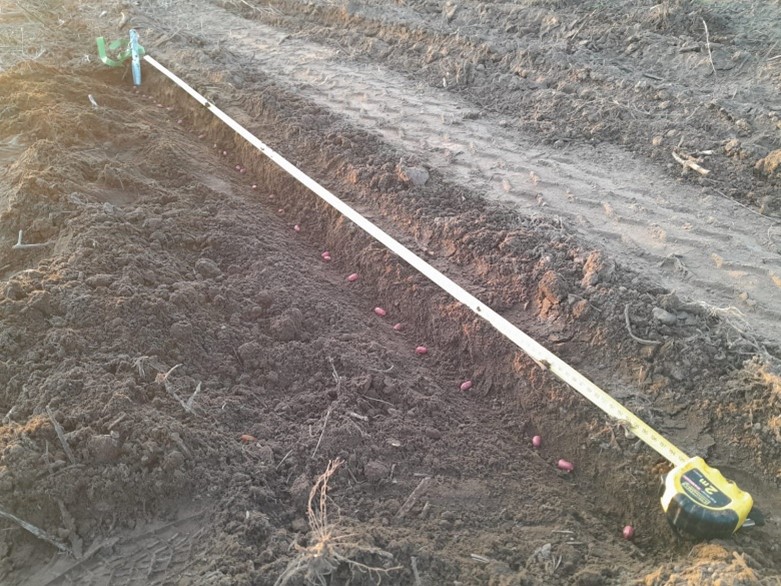
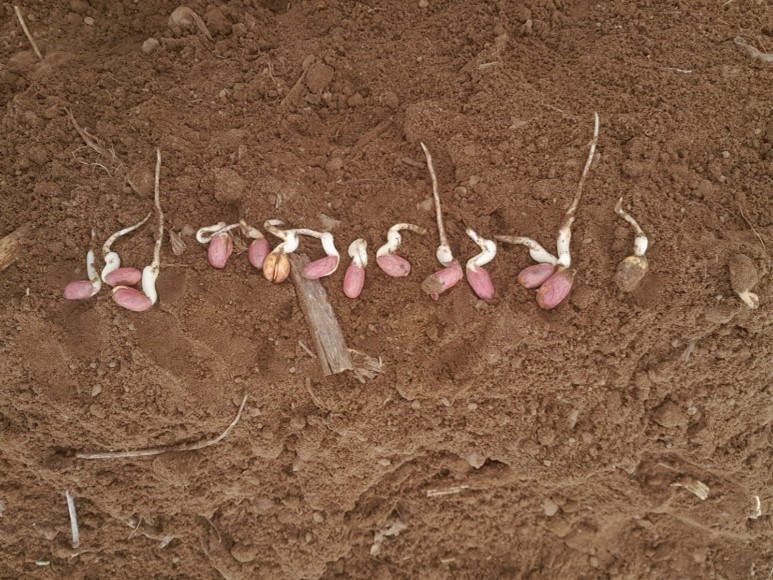
Final Remarks
After an extremely dry winter and spring, rains finally arrived in the last week of October, ensuring the emergence of peanuts and the continuation of planting tasks in Argentina. Planting, in general, started a few days later than in previous campaigns, attributed to a lack of moisture and inadequate soil temperatures for suitable emergence. Considering the rainfall records, it is expected that the planting cycle will be completed within an optimal time frame (October 25 to November 30). It is essential to highlight that we are entering a new crop cycle, and more rains will be needed in the coming days to ensure successful crop development.
Recent rains allowed the continuation and assurance of planting tasks within the expected timeframe, but there remains a moisture deficit that must be addressed to guarantee crop success. Planting-related tasks are in an intermediate stage, with only 39% remaining, primarily concentrated in the North, Central, and South-Central zones. Regarding crop phenology, peanuts planted in October are in early vegetative stages (Emergence-VN), while those planted in November are in the germination and emergence stage. As always, we are vigilant of medium and long-term forecasts, as although there’s talk of a “El Niño” year, this phenomenon has not manifested to the extent we anticipated.





